With global search and booking volumes continuing their gradual recovery and many hotel marketing teams back up to full strength (or at least, out of full-on damage limitation mode), right now there’s a great opportunity to get on the front foot with your direct booking strategy for the second half of 2021.
NB: This is an article from Triptease
Whether it’s getting your parity back on track or getting creative with some new offers, there are plenty of targeted, effective tactical shifts you can make right now to capture the potential guests out there who are showing high intent to travel. We’ve taken a look at some of our highest-performing hotels to see what it is they’re doing that’s driving their impressive recovery. Keep reading to find out the tips and tactics real hoteliers are using to drive direct bookings in an unpredictable market.
Subscribe to our weekly newsletter and stay up to date
1. Get your rate parity under control
There’s a reason why parity management is at the core of the Triptease Platform – it makes a huge difference to a hotel’s conversion rate. Taking a look at our data from the last six months, searches where the direct price was undercut by at least one OTA converted at around 4% – whereas searches where the direct price was best converted at over 7%. Optimizing your rate parity is still one the most high-impact things you can do to increase your online booking volumes.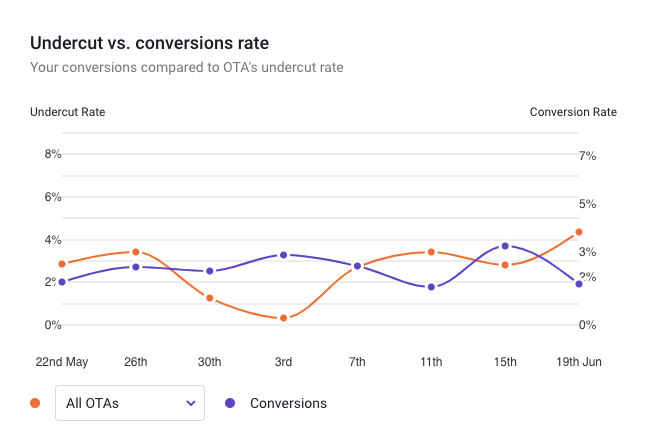
This screenshot from a hotel’s Parity Manager in the Triptease Platform is a great example of the often highly reciprocal relationship between OTA undercutting and onsite conversion. Every time the OTA undercutting (represented by the orange line) reduces, onsite conversion rates increase – and vice versa.
Some of the highest-performing hotels in our portfolio are those that are monitoring their OTA disparities daily and being strict with their market managers when harmful undercuts pop up. And while daily parity monitoring might not be an option right now if your team is still stretched thin, a tool like Triptease’s Parity Monitor can identify the highest-impact undercuts being seen by potential guests – so you can direct your effort where it will make the biggest difference.
The upheaval caused by the COVID-19 pandemic understandably threw many hotels’ distribution strategies into disarray. But don’t let your partners use that as an excuse for sneaky behavior: guests are more inclined than ever to book direct, so make sure you’re the one giving them the best price.
2. Use metasearch to get ahead of the OTAs
If you do have the best rate available, you need to make sure guests know about it! One really successful strategy we’ve seen being put into practice by our partner hotels is tactical rate management on metasearch. Meta is a platform used by the majority of guests at some point on their booking journey, and while its focus on price comparison means there’s nowhere to hide if OTAs are undercutting your rate, it also means there’s a big opportunity to differentiate your direct channel in front of highly-qualified traffic.
Brands like Pacha are standing out from the crowd on Google – by far the biggest metasearch platform in terms of traffic – with a combination of eye-catching AdWords campaigns and a differentiated metasearch presence.
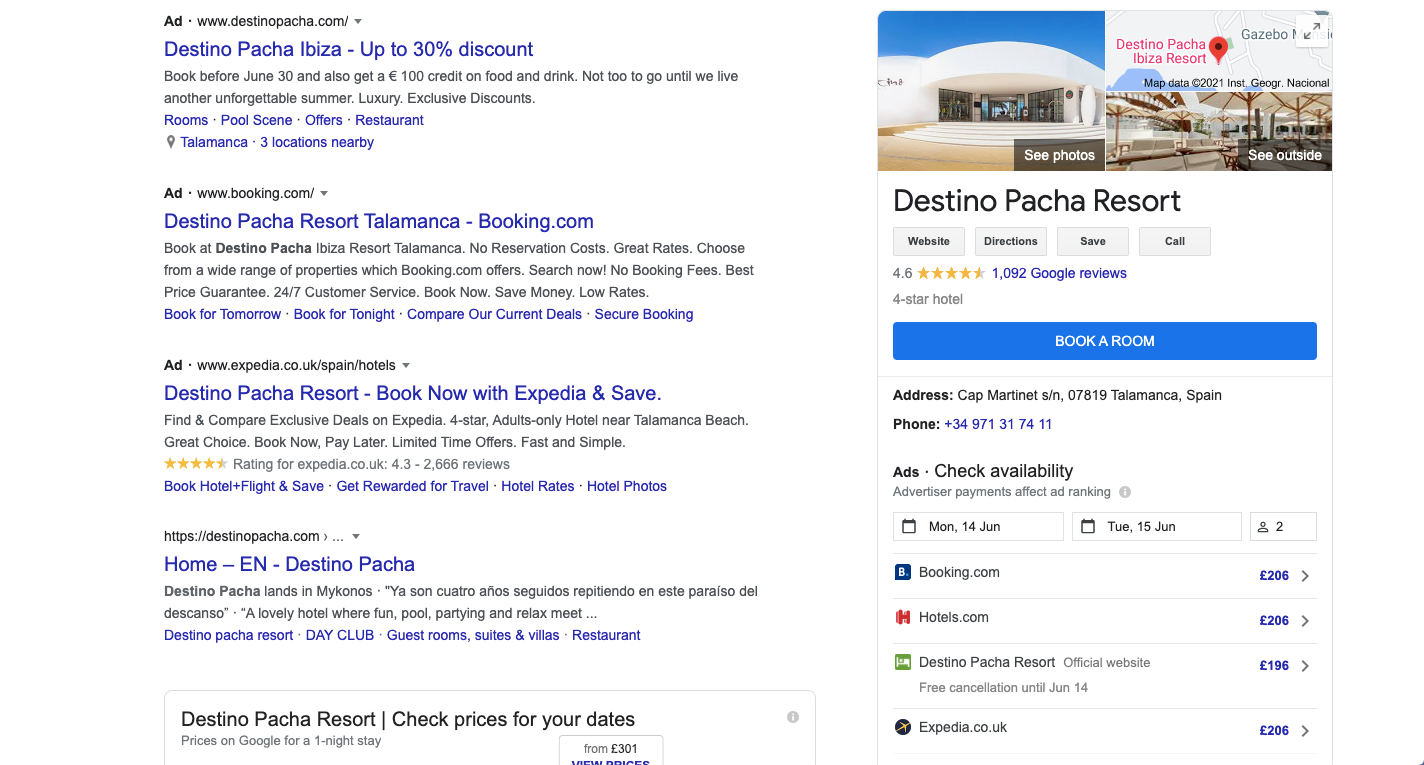
For this particular search, Pacha’s nightly rate is £10 cheaper than the other visible OTAs and they’re making use of callouts to highlight their cancellation policy. This, combined with their up-to-date Google My Business listing and high review scores, means there’s no need for Pacha to be bidding high for the top slot: given that they’re visible above the fold with the best rate, third ranking in the auction is likely to deliver similar click volumes for a better return.
An algorithmic approach to Meta like the one we use can make split-second bidding decisions based on factors like these, increasing your hotel’s position in the auction when you need it and even hiding your price if it’s being heavily undercut by OTAs.
If you aren’t in a position to publicly offer a cheaper rate than OTAs on metasearch, there are still options available to you. Google allows advertisers to add a ‘strikethrough’ price to their meta listing in situations where the guest can access a cheaper rate in return for taking an action on the website – for example, by signing up to a membership programme. If your hotel offers member rates or promotional deals, you could ‘strike out’ your BAR on Google and encourage the guest to click through to access a cheaper rate direct.
3. Run tests to find out what works best for your changing audience
For many hotels, the pandemic has significantly altered the characteristics of their usual audience. Long-stay international travel has been replaced by short-stay domestic for some, while business is being supplanted by leisure for others. And these changes might not only be for the short term: the pandemic is likely to alter patterns of booking behavior for years to come.
That means you can’t just re-run the same campaigns you might have used in 2019. Your audience has changed, and what they care about has changed too.
So how can you quickly verify what’s most likely to convince them to convert?
If you’re using a conversion optimization solution like Triptease’s Targeted Messages, it’s a great idea to use variant testing to get a feel for what matters to your audience and what kind of messaging they respond best to. Variant testing allows you to set up multiple versions of a message – be it an Exit Message, a Nudge, or even a Price Check – that are then shown to equal proportions of your audience, allowing you to get a sense for which message will perform best over the long term.
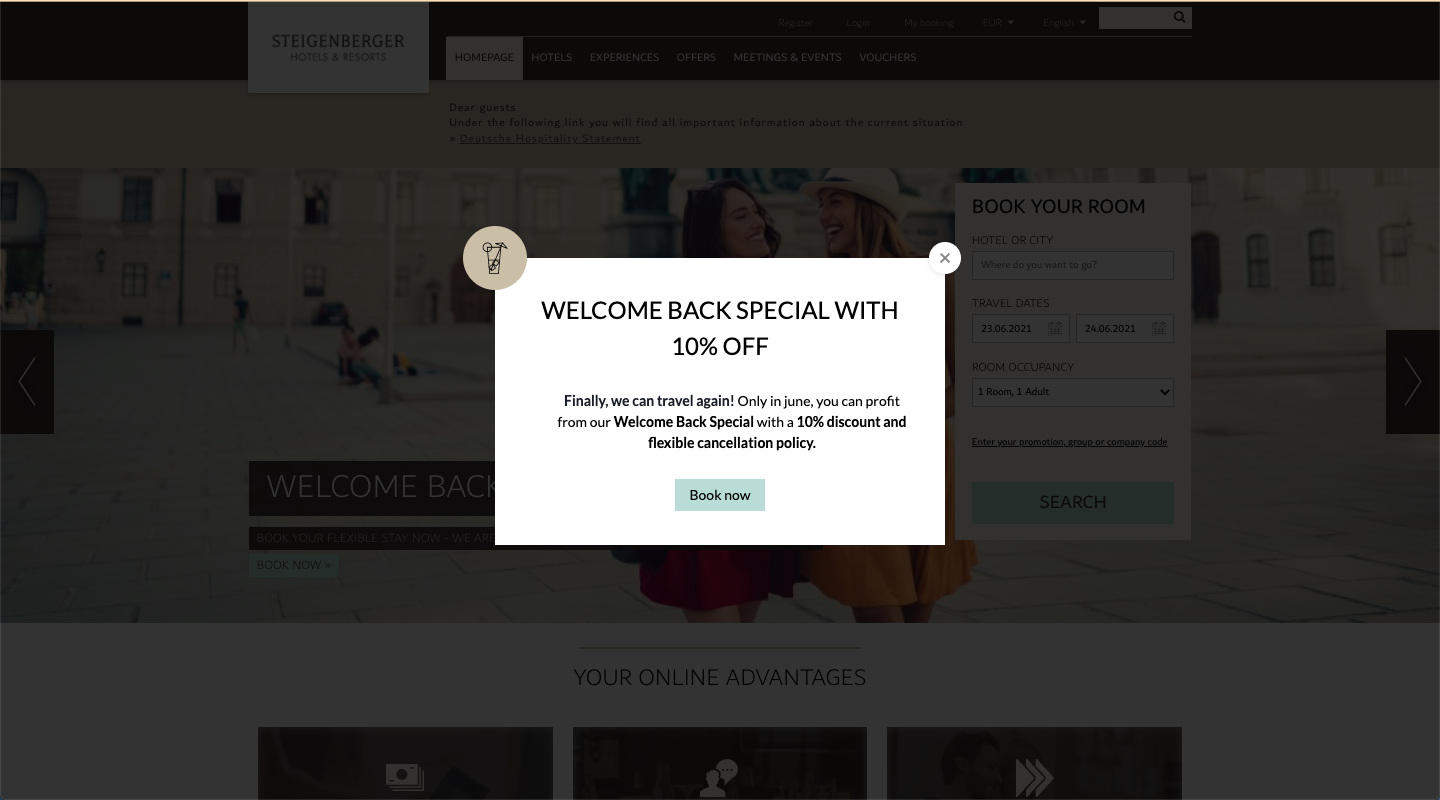
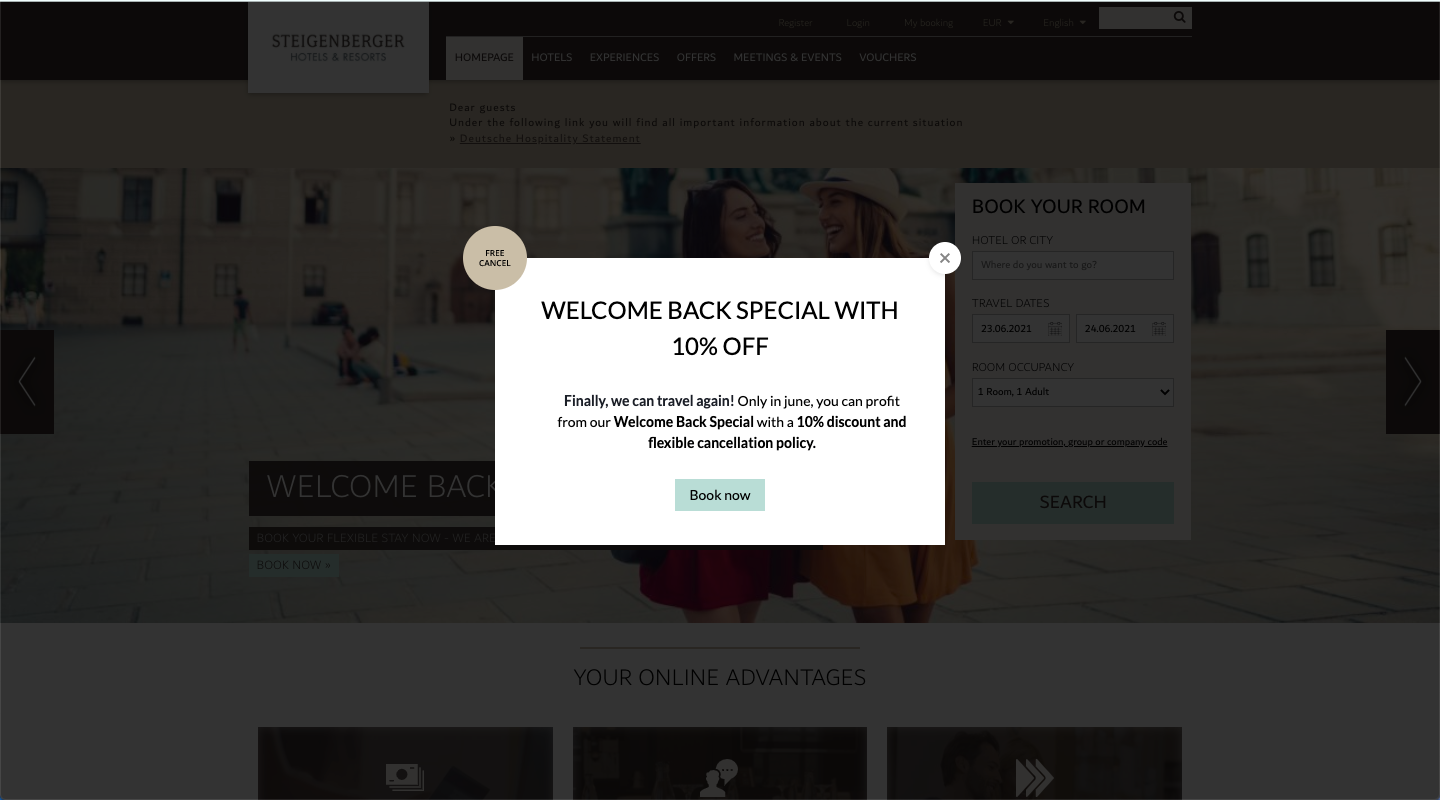
In this example, Steigenberger Hotels is using Triptease to run two versions of their ‘Welcome Back’ campaign, only varying the icon used alongside each message. One version highlights the celebratory aspect of the message with a fun cocktail icon, whereas the other emphasises the ‘free cancellation’ benefit included in the offer. A test like this one is a great way to gauge what matters to your online audience and gather learnings for future campaigns.
Bonus tip for Triptease clients: not sure how the make-up of your online audience has changed over the course of the pandemic? A great place to start is the Insights homepage of your Triptease Platform. This shows you the volumes of traffic you’re getting from different countries, and how well that traffic is converting into direct bookers.
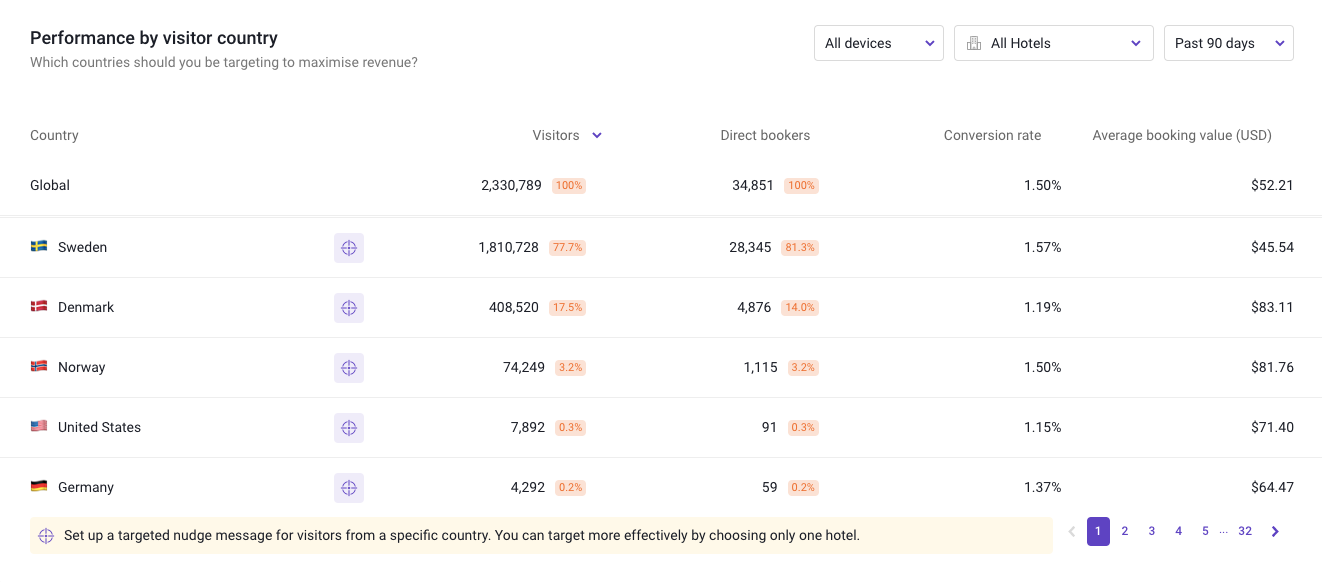
You can also check out the conversion rate of different lead times, to see how far in advance your audience is interested in booking. And if you want to target a particular cohort of traffic – for example, long-lead-time searchers – you can set up a Nudge message for a specific segment straight from this chart. You could even run a variant test to see what message works best for that group!
4. Get creative with new value-add promotions
Another property whose online performance has gone from strength to strength over the last few months is Hotel at the University of Maryland. Key to their success has been their proactive approach to creating new offers and promotions for their changing audience.
“Throughout the pandemic, we’ve been focused on understanding our buyer personas and how they’ve been changing,” explains Lana Nasyrov, Area Director of Revenue Management for UMD and its sister hotels. “That allowed us to build targeted strategies based on each persona’s behaviors. We were quick to create a ‘First Responder’ promotion and have added other ‘value-add’ offers too, including long-term stay rates for students and medical providers.
“In the early stages of our recovery, we focused on drive markets in particular. We had weekday and weekend promotions under an ‘Escape Lockdown’ message, offering parent and family getaways with additional incentives like free parking and flexible check-in / check-out times. Since then we’ve also launched our ‘Stay More, Save More’ campaign to start encouraging longer stays.





